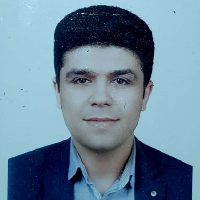Contamination of Rice Milk Samples with Toxic Heavy Metals in Ahvaz, Khuzestan Province, Iran
Rice milk is one of the traditional foods in Khuzestan province. Due to the combination of milk and rice, this product plays a major role as a diet for children under two years old and also as a diet for adults. Heavy metals represent a special group of food contaminants and exposure to heavy metals was shown to be directly related to progression of diseases. This study was conducted to determine the concentrations of some heavy metals in rice milk to evaluate whether the concentrations of these elements correspond to the permissible levels of toxic elements in milk and rice in Ahvaz, Khuzestan Province, Iran.
Totally, 50 rice milk samples (25 samples from East Ahvaz and 25 samples from West Ahvaz) were collected. The heavy metals in all samples were evaluated using quantified diffuse spectroscopy (OES) or mass spectrometry (MS).
The mean concentration of the arsenic and lead was above the permissible limit. The average nickel and cadmium concentrations in the samples were below the allowable limit values and no mercury was detected in all samples.
The study results showed that consumption of rice milk did not pose a direct and serious threat to the health of consumers. Future studies and continuous monitoring are necessary to assess the content of heavy metals and the risk of their consumption to the consumer of the rice milk.
Heavy metal , Rice milk , Health , Iran
-
Investigating the Cytotoxic Effect of Chitosan and Chitosan Nanoparticles in a Laboratory Environment: An In Vitro Model
Laya Ebrahimi, , Maryam Montaseri, Mansour Rahsepar, Saeid Hosseinzadeh*
Ilam University of Medical Science, -
Silver-Chitosan Nanocomposite Prepared with Aqueous Sodium-Hydroxide and Aqueous Acetic Acid Solutions: Characteristics and Their Cytotoxic Effects
Laya Ebrahimi, Saeid Hosseinzadeh *, Maryam Montaseri, , Mohammad Hashem Yousefi, Jaafar Jalaei, Mansour Rahsepar
Journal of Nano Structures, Spring 2023


